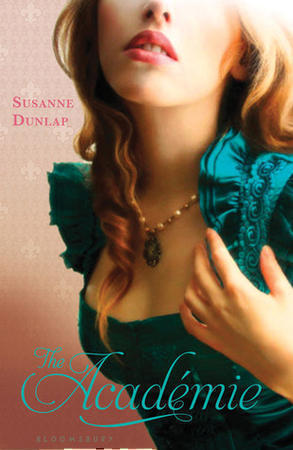 “THE ACADEMIE,” by Susanne Emily Dunlap,Bloomsbury USA Childrens, Hardcover, Feb. 28, 2012, $16.99 (ages 12 and up)
“THE ACADEMIE,” by Susanne Emily Dunlap,Bloomsbury USA Childrens, Hardcover, Feb. 28, 2012, $16.99 (ages 12 and up)
Most teenagers living today would die for the chance to go to school in France. But in 1799, Eliza Monroe, daughter of future U.S. president James Monroe, wants little to do with a boarding school outside of Paris. She thought she would be spending her year in the heart of the city, commuting to school during the day and living the high life at night. Her mother, however, has other plans and springs the boarding part of school on her daughter after they’ve arrived.
Eliza is at first put out with her mother, but can’t stay mad too long, especially when she learns Hortense de Beauharnais, daughter of Josephine Bonaparte, and Caroline Bonaparte, youngest sister of the famous French general, will be her classmates.
Near the same age, Hortense and Caroline appear on the outside to be close friends. Appearances can be deceiving. The two girls are mortal enemies who aren’t above playing unsuspecting foreigners against each other. Eliza finds them both intriguing and soon finds herself friends with both of them and smack dab in the middle of their schemes.
Susanne Dunlap’s “The Academie” is loosely based on history. Eliza Monroe did go to school in Europe and Hortense was her friend. Other parts of the story are also based on actual events — a note at the end of novel goes into those details.
For those who love historical fiction, “The Academie” is an OK choice. It’s not the best out there, but it certainly isn’t the worst.
The story is told from the alternating points of view of Eliza, Hortense and Madeleine, a fictional character whose mother is an actress. These different vantage points give the reader a broader look at the world, but become limited in scope because there are three narrators. It’s also an interesting choice not to include Caroline as a narrator. She plays such a large role in the novel, it almost feels like an omission.
There’s good information and an interesting premise behind “The Academie,” but it needs more polish, more fleshing out. The pacing is at times erratic and some of the characters feel more like props than actual players.
That said, the book does have its merits. Despite the pacing issues, it’s a quick read and Susanne’s prose is easily accessible.
